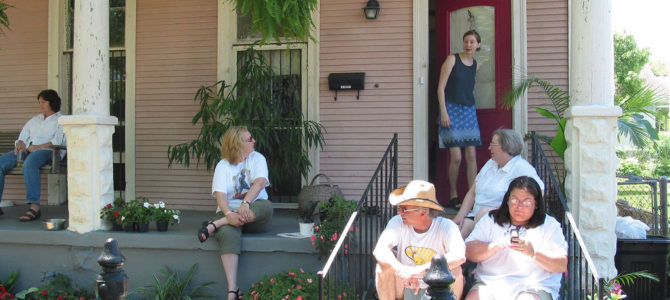
It is a common feature of dining out at restaurants to see a rather ironic scene. A significant number of people will, in the middle of a conversation, grab for their phones, either to snap a picture or to check what is going on “out there.”
It is not altogether strange to see the phones out as the cause of no conversation at all. The quiet stillness in a restaurant, or any other public venue, can be deceiving. This silence is an observable recognition that we are not talking and communicating with the persons right there in front of us.
In her book, “Reclaiming Conversation: The Power of Talk in a Digital Age,” sociologist Sherry Turkle argues that modern men and women have excelled at the “art” of finding new ways around conversation. We talk a lot, Turkle observes, but too little in person. Social media streams put us into a kind of conversation with others, but not one that is a stable foundation for real community. Our modern technology has rendered opportunities and real places of sociality with others less likely.
A recent article in The New York Times draws much-needed attention to this question of sociality. The op-ed features a coffee shop in Toronto, HotBlack Coffee, that does not offer its customers Wi-Fi. According to the president of the cafe, Jimson Binenstock, this was to foster a public space for conservation. HotBlack Coffee is designed to be a setting for sociality and human interaction. Otherwise, he rightly argues, the cafe is simply a commodity.
The contemporary coffee shop has become, more often than not, a setting where we go to do our work, browse the Internet, listen to music, or carry out some kind of activity that entails little to no interaction with others. It can be an avenue for sociality, but typically this is not the case, nor the goal. Social relationships are thus conceived in a manner that more resembles our airports than a sphere of robust human interaction.
From Porch to Patio to Coffee Shops
This lack of social interaction within the coffee shop can also be seen in other areas of contemporary American life. One can consider the issue of sociality even within the context of the architectural and cultural telos of our homes. Richard H. Thomas draws out these very implications in his 1975 essay, “From Porch to Patio.”
For Thomas, the design and purpose of a front porch was to connect families to the neighborhood, drawing them to see their fundamental relation to others besides themselves and immediate family members. The porch presents a vast array of opportunities to greet your neighbors or invite them in the house for continued conversation. It can also be the setting to watch children play in the street, which echoes Jane Jacobs’ insights regarding neighborhood safety and “eyes on the street.”
The unseemly porch, then, is a pretext for vibrancy and human community. As Thomas observes,
Part of the resistance toward abandoning the porch as an essential part of the home can be attributed to the primary group relationships that permeated both the large and small communities. It was important to know one’s neighbors and be known by them. The porch was platform from which to observe the activities of others. It also facilitated and symbolized a set of social relationships and the strong bond of community feeling which people during the nineteenth century supposed was the way God intended life to be. (“From Porch to Patio,” 123).
In the early twentieth century, however, architectural design was becoming fixated on erecting homes with backyard patios. The transition was as much of an architectural change as it was cultural. Instead of the home and its inhabitants being ordered towards others, it gradually came to be understood as the sphere of the private.
Furthermore, the back patio was a context, a structural barrier for being protected from our neighbors. The consequences of such a social reconceptualization should not be understated. What something like the back patio has inculcated is a loss of the centrality of our social nature, and the need for community bolstered by strong feelings of connection.
The Isolated Man Is a Beast or God
In the opening book of his “Politics,” Aristotle argues that human beings are naturally social and political animals. The reasoning here is not that of instrumentality, but of essence. In other words, human beings are ontologically configured to be ordered towards sociality as essential to their flourishing, and to that of others. For Aristotle, human beings alone have the property of speech, enabling them to communicate what is just, good, or otherwise.
This truth reaffirms us being ordered towards, and in need of, others. Justice and charity are the fundamental social and political virtues, precisely because they are the only ones primarily concerned with other people. The self-sufficient man, in this context, the individual directed to no other but himself, is either a beast or a god.
Coffee shops, like front porches, are places set up to provide a partial yet real completion of human beings’ social yearning. Yet we must remember that our sociality is not simply given for us only to fulfill the demands of justice. Instead, we come together to talk, laugh, socialize, and commune with others in response to something more than need. It is ultimately in friendship that we come together, in speech, reveling in the goods of this life that can be shared among those we call friends.
Without this, we will remain individuals, with little attachment to our places, neighbors, and the community as such. Robert Nisbet, in his prophetic book “The Quest for Community,” rightly predicted that modern democracy cannot survive without a new laissez faire grounded in robust social groups and associations. This is all the more reason we need sociable coffee shops and front porches, places we can be refreshed by companionship and establish “social relationships and the strong bond of community feeling.”








